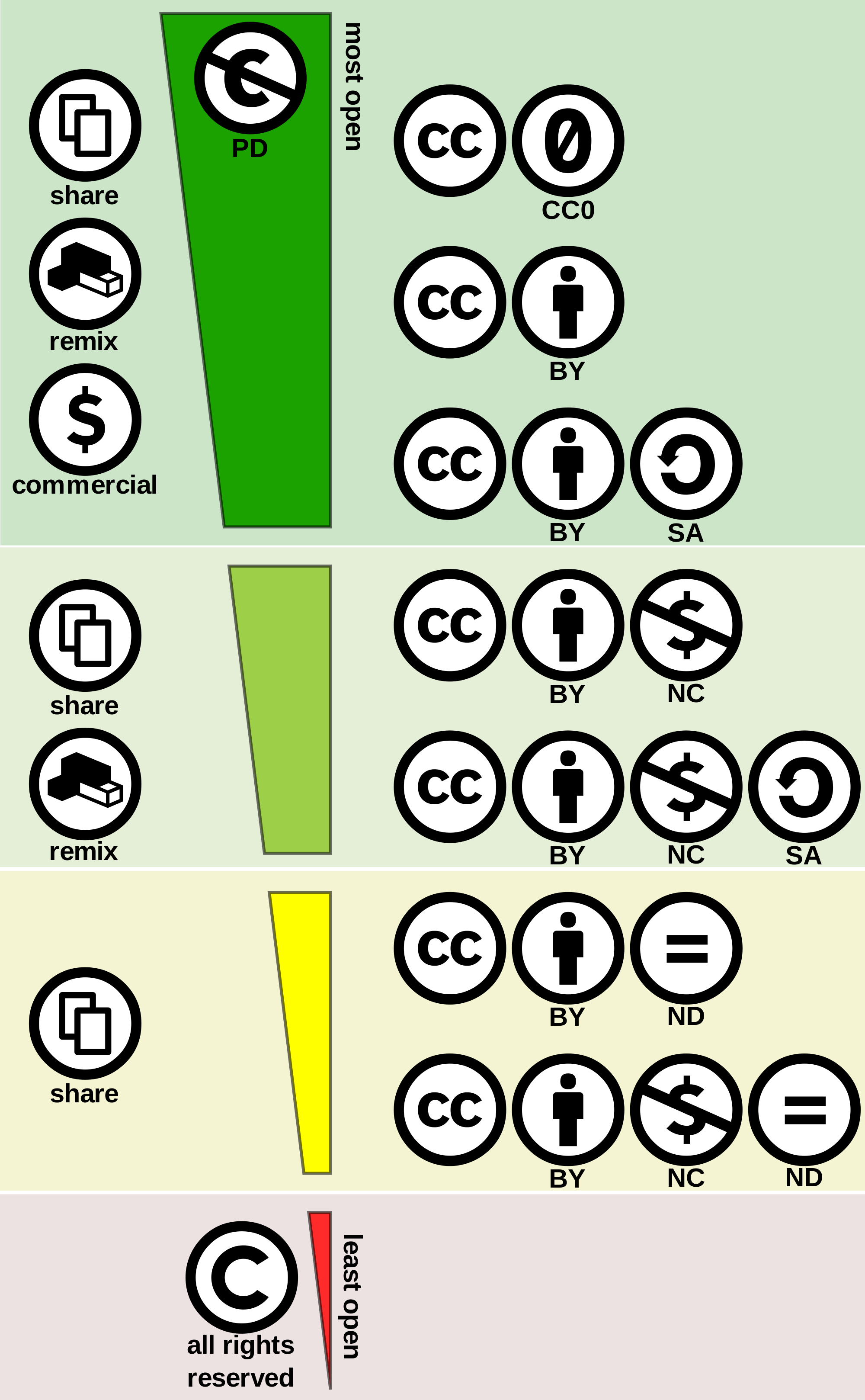Home
Biography
Projects
Final Project
Invention, IP, and Business Models
This week I will discuss two different licenses and choose one that best suits my goals for my final project. Specifically, I will be looking at the range of Creative Commons licenses and comparing them to the GNU and MIT licenses.
CC Licenses

The creative commons liscenses cover a wide range of applications and openness. The least open, CC-BY-NC-ND allows for open sharing as long as the the original creator is credited for his or her work. Other people cannot change what has been shared in any wayand cannot use it commercially.

The techinically most open, CC0 places the work in the public domain, allowing anyone to use the work for anything, without the need for crediting the original creator. The next most open is CC-BY, requiring anybody who shares or modifies it to credit the original creator, but they can change anything they wish, including which license they redistribute it under. The work can also be used commercially. This is the license used by the KSP Serial IO mod that I plan on basing my final project on. This license is suitable for a game mod because the creator can have his mod improved upon by others and can even be included in the game itself, all while receiving credit for his work.


There are many diffrent levels of CC licenses between these,
consiting of various combinations of NC (non commercial), SA (share alike, or redistribute with the same license), and ND (no publicly shared derivatives).
GNU General Public License V3

GPL is a software license designed to protect user's freedom. Specifically, the user's freedom to run the program, to study and change the program, to redistribute the program, and to redistribute modified versions of the program. It accomplishes this by requiring complete source code and documentation, ensuring that a copy of the license is availible to the user, The license does not prohibit the sale of the software.
The license does not cover
hardware, so if I were to use this, then I would need another license to cover the hardware I will put together.
MIT License
The MIT License simply states that no restrictions will be placed on the software that the liscense is applied to in terms of modification and redistribution, including sales, provided that the (very short) license is provided in every copy of the software. This license is very similar to GPL, but it has a few small variations of the license, one of which states that the contributers' names will not be used to promote the product. Since the license does not refer to hardware, it can be assumed that this license does not apply to hardware. If I were to use this license, then I would need a seperate license to cover the hardware.
What I chose
I chose to use the Creative Commons CC-BY-SA license. I chose this license because it covers both hardware and software (to a degree on the latter). If I use only one license, that is one less thing to juggle while expanding my final project. In the future I may apply a proper software license such as the MIT license to any software I write.
Possibilities to Probabilities
If I were to be asked by someone to create ten thousand units of my final project, I would probably attempt to start with the hand-made methods I am familiar with. I'm sure that I would stop using these methods quickly, considering that etching and soldering each individual board would be extremely time consuming, not to mention the expense of making the enclosure. I would then adapt my boards to the standards of some board manufacturer, such as changing the board to two sided, adding text, etc. I would also change the construction method of my case from laser cut acrylic to something cheaper to manufacture, such as composites, vaccum forming, or injection moulding.
Shipping would be another problem entirely, considering that the assembled box will be relatively heavy and delicate. I would probably use pre-existing shipping options provided by most postal companies.

